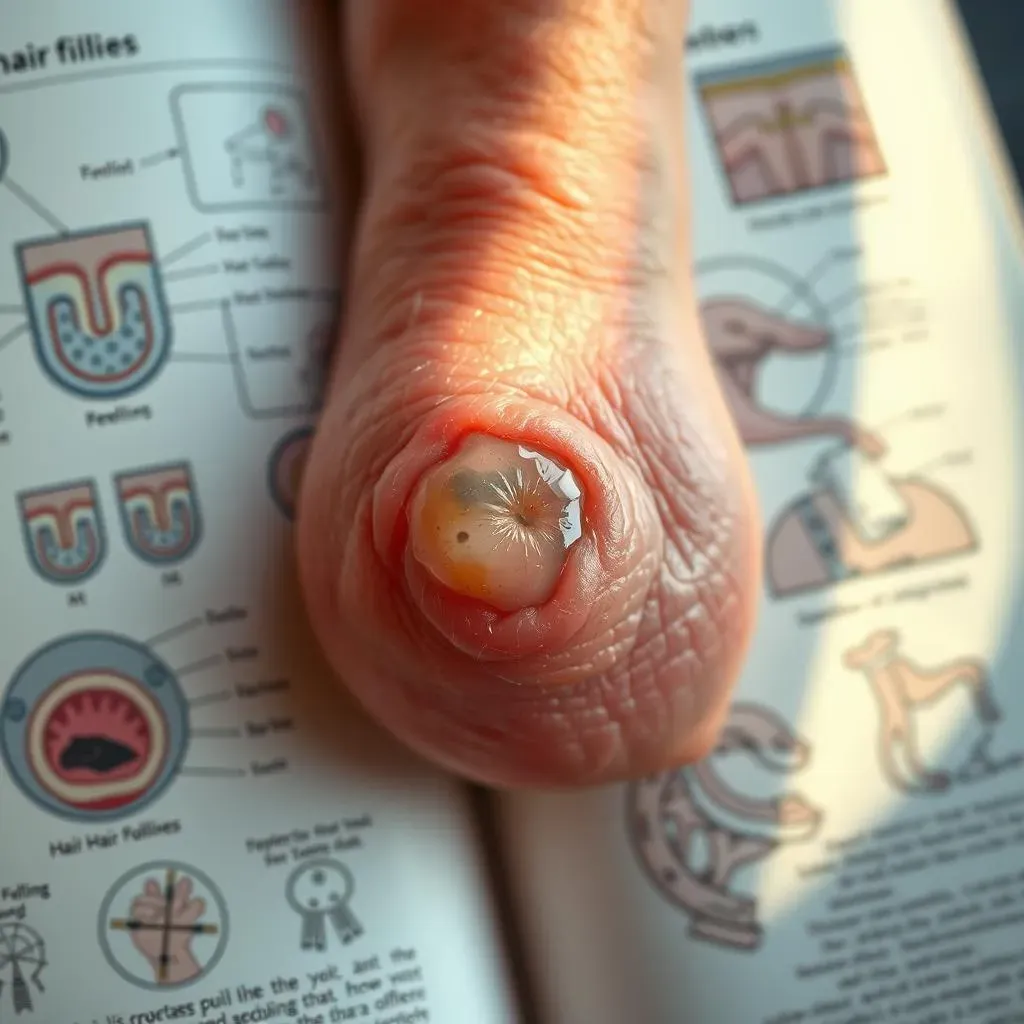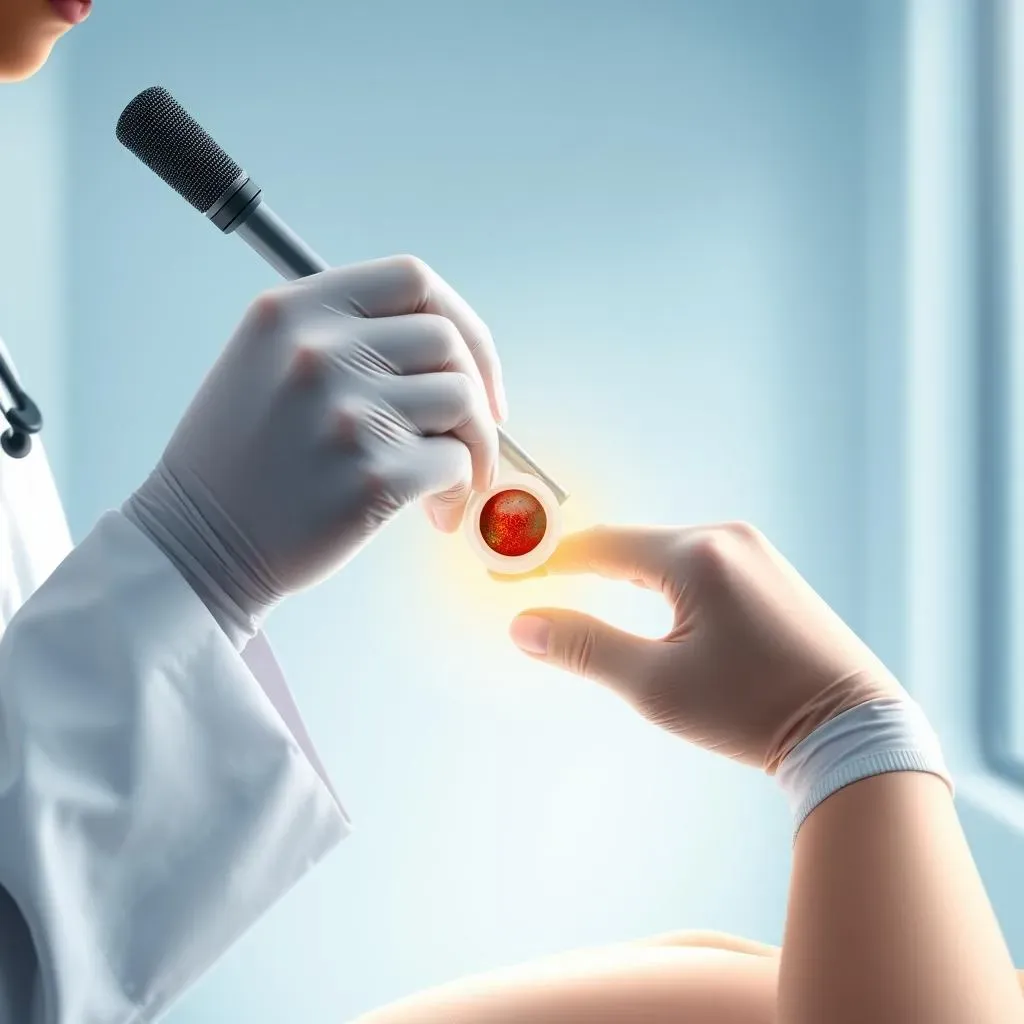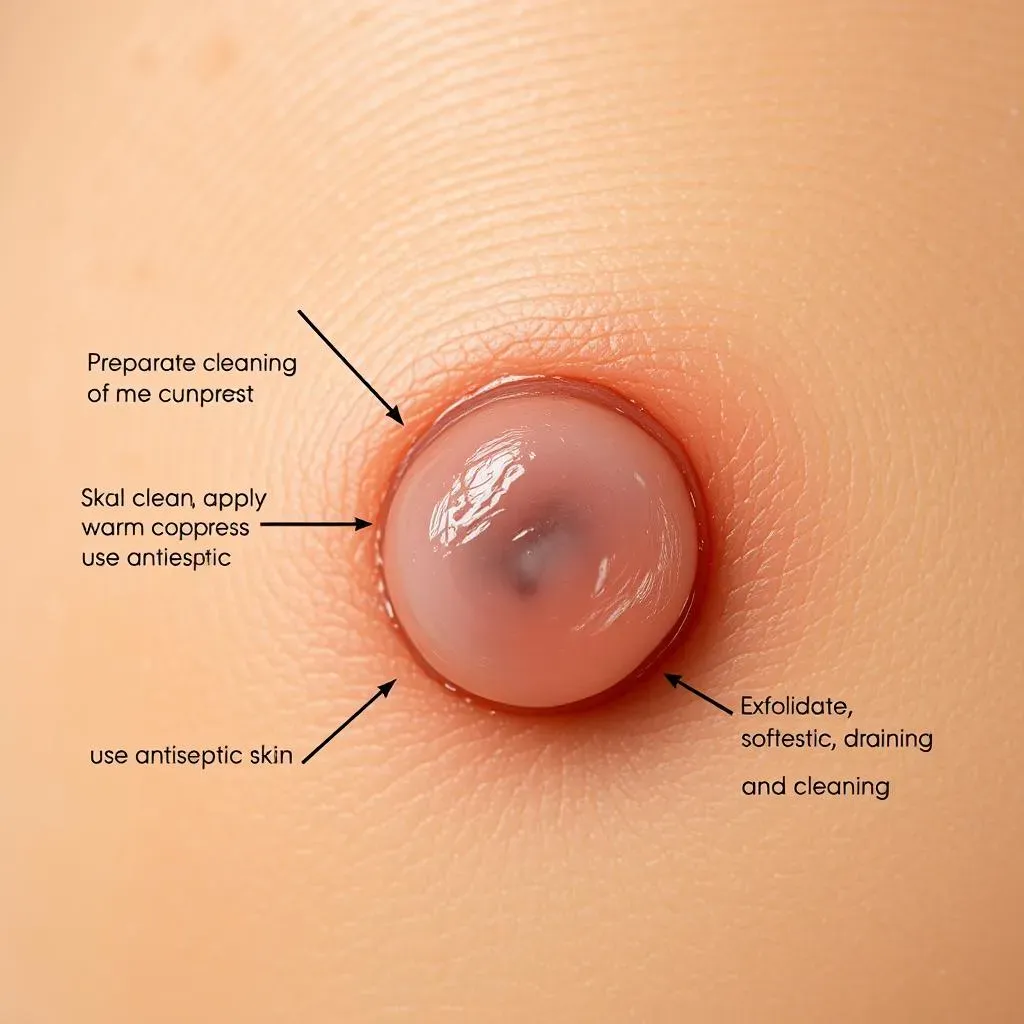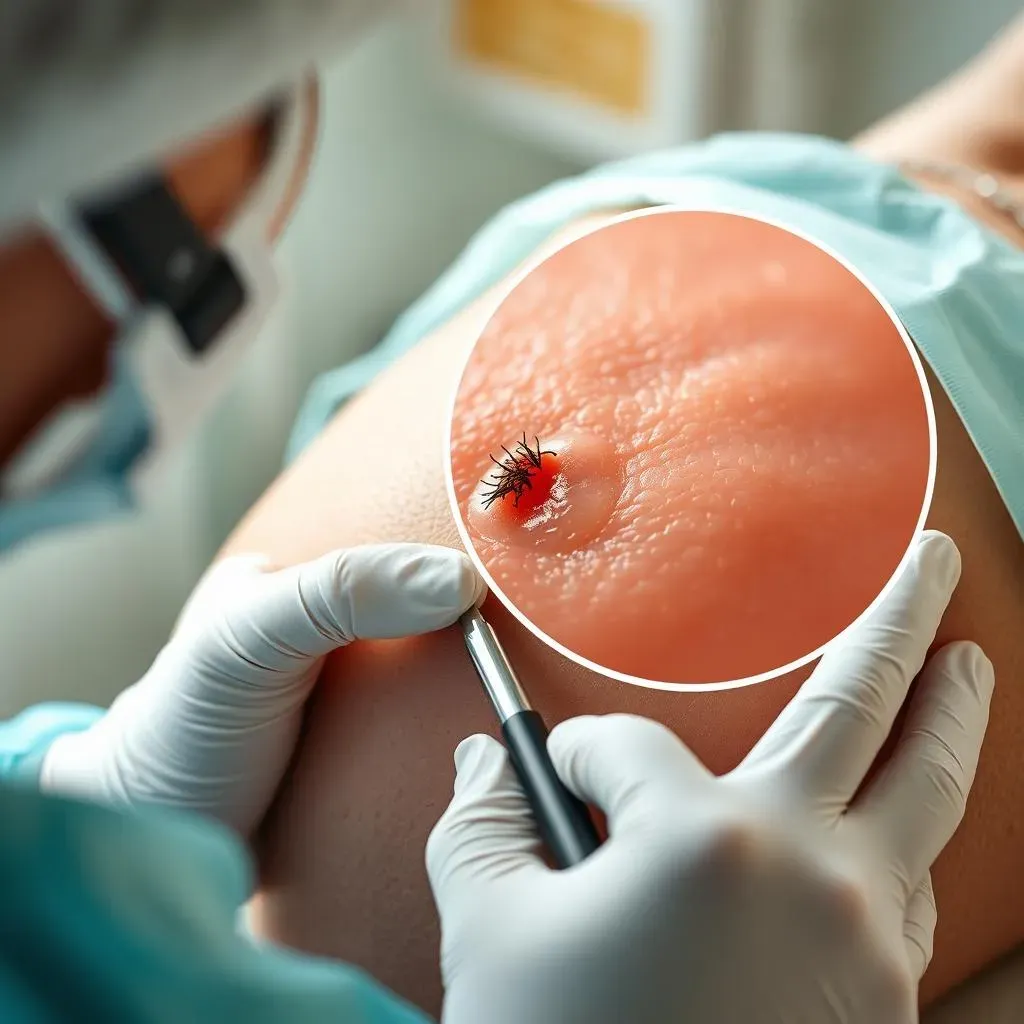Table of Contents
Ingrown hair cysts can be a painful and frustrating problem, especially for those who frequently remove body hair. These cysts occur when a hair grows back into the skin, leading to inflammation, redness, and sometimes infection. If you're struggling with an ingrown hair cyst, you're likely searching for effective ways to remove it and prevent future occurrences. Removing ingrown hair cysts requires careful consideration to avoid further irritation or infection. In this article, we'll explore the causes and symptoms of ingrown hair cysts, discuss various methods for removing them, both at home and with medical treatment, and provide tips on how to prevent them from forming in the first place. Whether you're looking for home remedies or considering medical intervention, this guide will walk you through the process of how to remove ingrown hair cysts safely and effectively. By the end of this article, you'll be equipped with the knowledge to tackle ingrown hair cysts and maintain healthy, smooth skin.
Understanding Ingrown Hair Cysts: Causes and Symptoms

Understanding Ingrown Hair Cysts: Causes and Symptoms
An ingrown hair cyst, also known as a pseudofolliculitis barbae, occurs when a hair curls back into the skin instead of growing outwards. This can cause inflammation, redness, and sometimes infection. Ingrown hair cysts are more common in areas where hair is coarse or curly, such as the bikini line, armpits, or neck. They can be painful and may become infected if left untreated.
The symptoms of an ingrown hair cyst include a small, painful bump or blister, redness and swelling around the affected area, pus or discharge if the cyst becomes infected, and itching or burning sensations. In severe cases, ingrown hair cysts can lead to scarring or the formation of keloids.
Causes of Ingrown Hair Cysts
Several factors contribute to the development of ingrown hair cysts. These include:
- Improper shaving techniques: Shaving too closely, using a dull razor, or shaving against the grain can cause hairs to become trapped.
- Hair removal methods: Waxing, tweezing, and depilatory creams can also lead to ingrown hairs, especially if the skin is not properly prepared.
- Dry skin: Dry skin can cause hairs to become brittle and more likely to break and curl back into the skin.
- Friction and pressure: Tight clothing, heavy exercise, or constant rubbing can irritate the skin and push hairs back into the follicle.
- Genetic predisposition: Individuals with curly or coarse hair are more prone to ingrown hairs due to the shape of their hair follicles.
Understanding these causes is crucial in preventing ingrown hair cysts and reducing their occurrence.
Symptoms and Identification
Ingrown hair cysts can be identified by their appearance. They often look like small, round bumps on the skin and may be red, inflamed, and painful to the touch. In some cases, a small, pus-filled head may form on the surface of the cyst.
Symptom | Description |
|---|---|
Pain | A dull ache or sharp pain in the affected area |
Redness and swelling | The skin around the cyst becomes red, swollen, and inflamed |
Pus or discharge | The cyst may rupture and release pus or a foul-smelling discharge |
Early identification and treatment of ingrown hair cysts can prevent complications and promote faster healing.
Methods for Removing Ingrown Hair Cysts: Home Remedies and Medical Treatments

Methods for Removing Ingrown Hair Cysts: Home Remedies and Medical Treatments
Ingrown hair cysts can be treated using various methods, ranging from home remedies to medical treatments. The approach taken depends on the severity of the cyst and the individual's overall health. For mild cases, home remedies can be effective in reducing inflammation and promoting healing. However, for more severe or infected cysts, medical intervention may be necessary.
Home remedies for ingrown hair cysts include applying warm compresses to the affected area several times a day. This helps to bring the cyst to a head, allowing it to drain and reducing the risk of infection. Antiseptic solutions, such as tea tree oil or triple antibiotic ointment, can also be applied to prevent infection and promote healing. In some cases, a doctor may prescribe oral antibiotics to treat an infected cyst.
Treatment | Description | Effectiveness |
|---|---|---|
Warm compresses | Apply a warm, damp cloth to the cyst for 10-15 minutes, 3-4 times a day | Helps bring the cyst to a head, reducing inflammation and promoting drainage |
Antiseptic solutions | Apply tea tree oil or triple antibiotic ointment to the cyst 2-3 times a day | Prevents infection and promotes healing |
Oral antibiotics | Prescribed by a doctor for infected cysts | Treats bacterial infections and reduces inflammation |
For more severe cases, medical treatments may be necessary. A doctor may use a needle to drain the cyst or prescribe medications to reduce inflammation. In some cases, surgical removal of the cyst may be required. It's essential to consult a healthcare professional before attempting to remove an ingrown hair cyst, as improper removal can lead to infection, scarring, or further complications.
- Avoid popping or squeezing the cyst, as this can push bacteria and other debris deeper into the skin, leading to infection.
- Don't share razors or other personal care items to prevent the spread of infection.
- Keep the affected area clean and dry to prevent bacterial growth.
By exploring both home remedies and medical treatments, individuals can find the most effective method for removing ingrown hair cysts and preventing future occurrences.
How to Remove Ingrown Hair Cysts: StepbyStep Guide

How to Remove Ingrown Hair Cysts: StepbyStep Guide
Preparing for Removal
Before attempting to remove an ingrown hair cyst, it's essential to prepare the skin and the cyst itself. Start by cleaning the affected area with mild soap and lukewarm water. Pat the area dry with a clean towel to prevent bacterial growth. Applying a warm compress to the cyst for 10-15 minutes, 3-4 times a day, can help bring it to a head and make it easier to remove.
If the cyst is infected, consider applying an antiseptic solution, such as tea tree oil or triple antibiotic ointment, to reduce the risk of further infection. It's also crucial to avoid popping or squeezing the cyst, as this can push bacteria deeper into the skin and lead to more severe complications.
Preparation Step | Description | Benefits |
|---|---|---|
Clean the area | Use mild soap and lukewarm water | Prevents infection and promotes healing |
Apply warm compress | 10-15 minutes, 3-4 times a day | Brings the cyst to a head, reducing inflammation |
Use antiseptic solution | Tea tree oil or triple antibiotic ointment | Prevents infection and promotes healing |
Step-by-Step Removal Guide
Removing an ingrown hair cyst requires patience and gentle care. Here's a step-by-step guide to help you remove the cyst safely:
- Exfoliate the skin: Gently exfoliate the area around the cyst using a gentle scrub or a chemical exfoliant containing alpha-hydroxy acids (AHAs) or beta-hydroxy acids (BHAs). This helps remove dead skin cells and can encourage the hair to grow out.
- Softening the cyst: Apply a warm compress to the cyst for 10-15 minutes to soften the skin and bring the cyst to a head.
- Draining the cyst: Using a sterile needle or a lancet, carefully drain the cyst. Avoid squeezing the cyst, as this can cause further irritation and scarring.
- Cleaning and dressing: After draining the cyst, clean the area with mild soap and lukewarm water. Apply an antiseptic solution to prevent infection and cover the area with a bandage to protect it from further irritation.
It's essential to monitor the cyst after removal and seek medical attention if you notice signs of infection, such as increased redness, swelling, or pus.
Preventing Ingrown Hair Cysts: Tips and Best Practices

Preventing Ingrown Hair Cysts: Tips and Best Practices
Preventing ingrown hair cysts requires attention to your skin care routine and hair removal techniques. By making a few simple changes, you can significantly reduce the risk of developing ingrown hair cysts. Here are some tips to help you prevent ingrown hair cysts:
- Exfoliate regularly: Exfoliating helps remove dead skin cells and can encourage hairs to grow out instead of back into the skin.
- Use a sharp razor: A dull razor can cause hairs to become trapped, leading to ingrown hairs. Change your razor blade frequently to ensure a smooth shave.
- Shave in the direction of hair growth: Shaving against the grain can cause hairs to become trapped and lead to ingrown hairs.
- Moisturize after shaving: Keeping your skin moisturized can help reduce irritation and inflammation, making it less likely for ingrown hairs to develop.
- Avoid tight clothing: Tight clothing can cause friction and irritation, which can contribute to ingrown hairs.
Additionally, considering alternative hair removal methods such as waxing, sugaring, or laser hair removal can help reduce the risk of ingrown hairs. Laser hair removal, in particular, can provide long-term reduction in hair growth, reducing the need for frequent shaving and the risk of ingrown hairs.
Prevention Method | Description | Benefits |
|---|---|---|
Exfoliate regularly | Removes dead skin cells, encourages hair growth | Reduces risk of ingrown hairs |
Use a sharp razor | Smooth shave, reduces hair trapping | Decreases ingrown hair risk |
Shave in the direction of hair growth | Prevents hairs from becoming trapped | Reduces inflammation and ingrown hairs |
Additional Tips for Sensitive Areas
For sensitive areas such as the bikini line or underarms, it's essential to take extra precautions to prevent ingrown hairs. Consider using a soothing shave gel or cream to help the razor glide smoothly over the skin. After shaving, apply a cool compress or aloe vera gel to reduce inflammation.
- Avoid shaving over the same spot multiple times: This can cause irritation and increase the risk of ingrown hairs.
- Use a moisturizer specifically designed for sensitive skin: Keeping the skin hydrated can help reduce irritation and inflammation.
- Consider using a hair removal cream: Depilatory creams can be less irritating than shaving and reduce the risk of ingrown hairs.
Frequently Asked Questions About Ingrown Hair Cysts and Their Removal

Frequently Asked Questions About Ingrown Hair Cysts and Their Removal
What are Ingrown Hair Cysts?
Ingrown hair cysts, also known as pseudofolliculitis barbae, occur when a hair curls back into the skin instead of growing outwards. This can cause inflammation, redness, and sometimes infection. Ingrown hair cysts are more common in areas where hair is coarse or curly, such as the bikini line, armpits, or neck.
The symptoms of an ingrown hair cyst include a small, painful bump or blister, redness and swelling around the affected area, pus or discharge if the cyst becomes infected, and itching or burning sensations. In severe cases, ingrown hair cysts can lead to scarring or the formation of keloids.
How to Identify an Infected Ingrown Hair Cyst
An infected ingrown hair cyst can be identified by increased redness, swelling, and warmth around the affected area. You may also notice pus or discharge, a foul odor, or increased pain. If you suspect your ingrown hair cyst is infected, it's essential to seek medical attention to prevent further complications.
Symptoms of Infection | Description |
|---|---|
Increased redness and swelling | Area around the cyst becomes more red, swollen, and inflamed |
Pus or discharge | Cyst ruptures and releases pus or a foul-smelling discharge |
Foul odor | Noticeable unpleasant smell from the affected area |
Increased pain | Pain in the affected area increases, becoming more severe |
Early identification and treatment of infected ingrown hair cysts can prevent serious complications and promote faster healing.
Can Ingrown Hair Cysts be Prevented?
While ingrown hair cysts can be unpredictable, there are several steps you can take to reduce their occurrence. Exfoliating regularly, using a sharp razor, shaving in the direction of hair growth, and moisturizing after shaving can all help prevent ingrown hairs. Additionally, considering alternative hair removal methods such as waxing, sugaring, or laser hair removal can reduce the need for frequent shaving and lower the risk of ingrown hairs.
- Exfoliate regularly to remove dead skin cells
- Use a sharp razor to shave, replacing the blade frequently
- Shave in the direction of hair growth to avoid trapping hairs
- Moisturize after shaving to reduce irritation and inflammation
- Consider alternative hair removal methods for long-term reduction
By incorporating these practices into your skincare routine, you can significantly lower your risk of developing ingrown hair cysts.
How to Remove Ingrown Hair Cysts Safely
Removing an ingrown hair cyst requires care and patience. For mild cases, home remedies such as applying warm compresses and antiseptic solutions can be effective. However, for more severe or infected cysts, medical intervention may be necessary. It's essential to avoid popping or squeezing the cyst, as this can lead to further irritation, infection, or scarring.
Removal Method | Description | Risks and Benefits |
|---|---|---|
Warm compresses | Apply a warm, damp cloth to the cyst for 10-15 minutes, 3-4 times a day | Helps bring the cyst to a head, reducing inflammation; low risk |
Antiseptic solutions | Apply tea tree oil or triple antibiotic ointment to the cyst 2-3 times a day | Prevents infection and promotes healing; low risk |
Surgical removal | A doctor surgically drains or removes the cyst | Effective for severe cases; higher risk of scarring and infection if not done properly |
Consulting a healthcare professional is crucial before attempting to remove an ingrown hair cyst, especially if it's infected or severe.
Long-Term Solutions for Ingrown Hair Cysts
For individuals prone to frequent ingrown hair cysts, long-term solutions such as laser hair removal can provide a more permanent reduction in hair growth. Laser hair removal works by targeting the hair follicle with a laser beam, disabling its ability to grow hair. This method is particularly effective for areas with coarse or curly hair.
Other alternatives include electrolysis, which involves inserting a fine needle into the hair follicle and applying an electrical charge to destroy the hair root. While these methods require multiple sessions and can be costly, they offer a significant reduction in hair growth and the associated risk of ingrown hairs.
- Laser hair removal: Targets the hair follicle with a laser beam
- Electrolysis: Destroys the hair root with an electrical charge
These long-term solutions can be effective for those looking to minimize the occurrence of ingrown hair cysts and achieve smoother skin.
Conclusion: Taking Control of Ingrown Hair Cysts
Ingrown hair cysts can be a challenging and painful issue, but with the right approach, you can remove them and prevent future occurrences. By understanding the causes and symptoms, exploring home remedies and medical treatments, and adopting preventive measures, you can take control of your skin health. Remember, it's essential to avoid popping or picking at ingrown hair cysts, as this can lead to infection or scarring. Instead, opt for gentle, informed methods to remove ingrown hair cysts, such as warm compresses, antiseptic solutions, or professional medical removal. With patience, diligence, and the right strategies, you can say goodbye to ingrown hair cysts and enjoy smooth, healthy skin. Visit hairawaybylaser.com for more information on hair removal and skin care.
